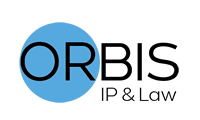ORBIS IP & LawSupport from experienced professionals in the technical field...ORBIS
Firmanın çeviri hizmetleri QCS International tarafından ISO 17100: 2015 tercüme kalite sertifikası ile belgelendirilmiştir. Bu sertifika kapsamında tüm çeviri hizmetleri sertifikasyon kurumu tarafından değerlendirilmiş olup, her alanda yazılı çeviri ve yeminli tercümeler için akredite edilmiştir.
A granted European patent travels across borders between the different national and regional patent offices, each office registering the same patent with different translations. The result: the scope of protection differs from one country to the next, because of the different translations in each national language. A translation discrepancy may mean that a patent’s claims are broader than those of any of its equivalents, thereby conferring more protection than is justified, making the patent potentially invalid – or the opposite. Because national patent offices do not reject the validation requests, the patent holder may only discover this problematic situation when it takes action against an infringer many years after the patent is validated.
Word by word translations, insufficient know-how in the related particular field of science or engineering, linguistic difficulties and non-existent words in the appropriate national language can damage the whole scope of protection of a patent and protection scope.

A patentee or IP firm should assess a professional translator against several criteria. Does the translator have sufficient experience in patent translations? Do they have the necessary technical background? Are they able to provide references from satisfied clients? But these are only a starting point. To perform a good patent translation requires more. How the translator works on translations, and the procedures they follow are also important. For example, how many times will the translator proofread the translation before it is finalized? Who carries out this essential check? Patent attorneys indisputably have the most relevant experience when it comes to reading patent documents, and must be involved in checking translations. Can the translator provide a sworn translation certificate? Can the IP firm certify that the translation is performed under a special guarantee, such as a sworn translation (even if there is no need for a sworn translation of patent texts before a national validation request)?
An answer to these questions may help to specify the quality of a patent translation without being a native speaker in the related national language.
Patent translation services require a perfect understanding of technical translators using the correct technical terminology. They are forced to have the knowledge for a specific field and have to be experienced by being able to use several sources and tools to ensure a qualitative translation.
Translation services of the firm have been certified with the ISO 17100:2015 certificate by QCS International. In the scope of this certificate, all translation services have been assessed and found to comply with the requirements of ISO 17100:2015 for multilingual written translation in every field and sworn translations.
Each translation is connected with an acute proofreading stage, and we are handling those stages with close attention by taking special care in support of special CAT-tools. Orbis is adapted several such translation tools to minimize any translation discrepancies and costs. Designed for corporations, translation agencies, CAT-tools allow to perform perfect translations and time- and cost-effective solutions due to its memory. These tools also allow that several translations are working together on one case and proofread with the same procedure and technique, which ensures to be always on-time.
All patent translations at Orbis are being handled with two proofread stages, the last of which is practiced by the patent attorney who checks the general patent protection scope and claims considering possible translation discrepancies and semantic changes. Attorneys always cross-check legal translations in consideration of their sensitive characteristic.



